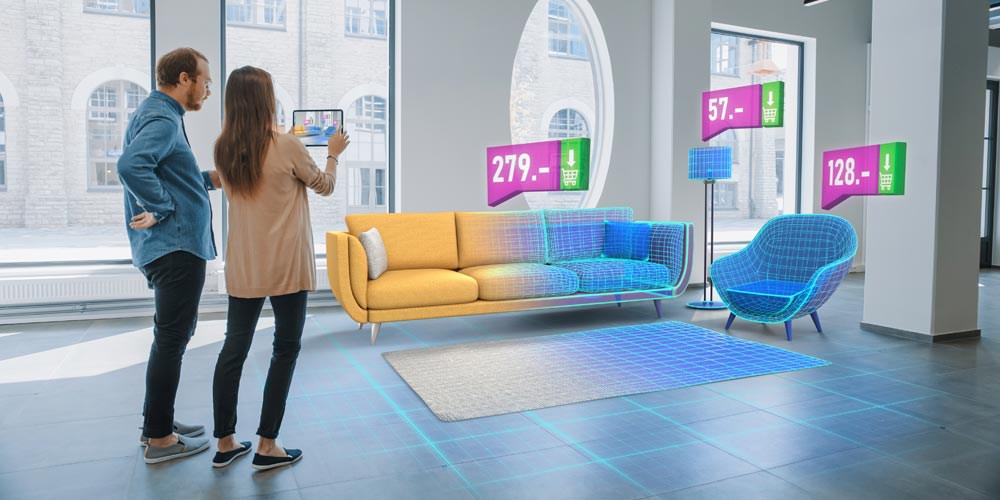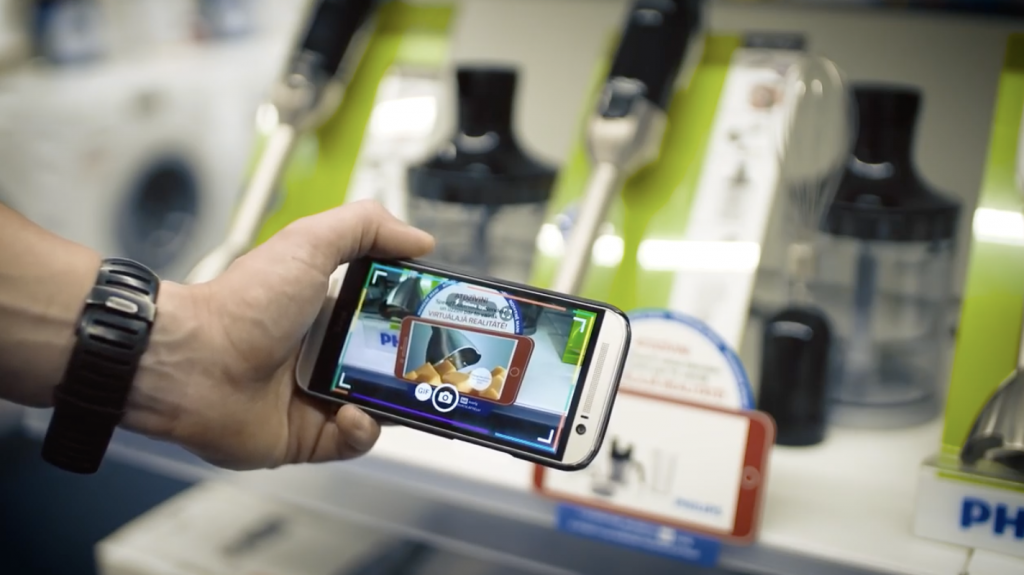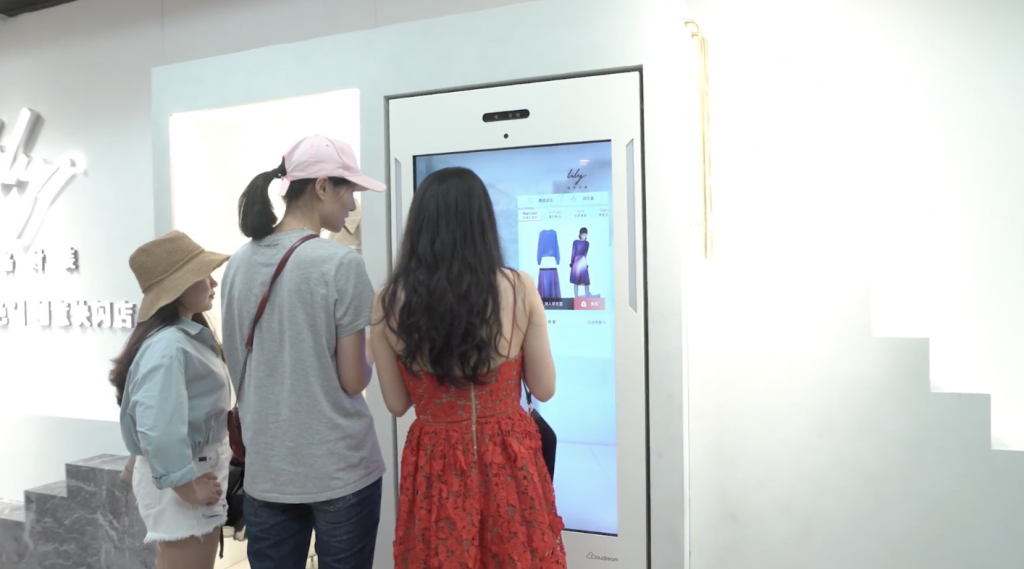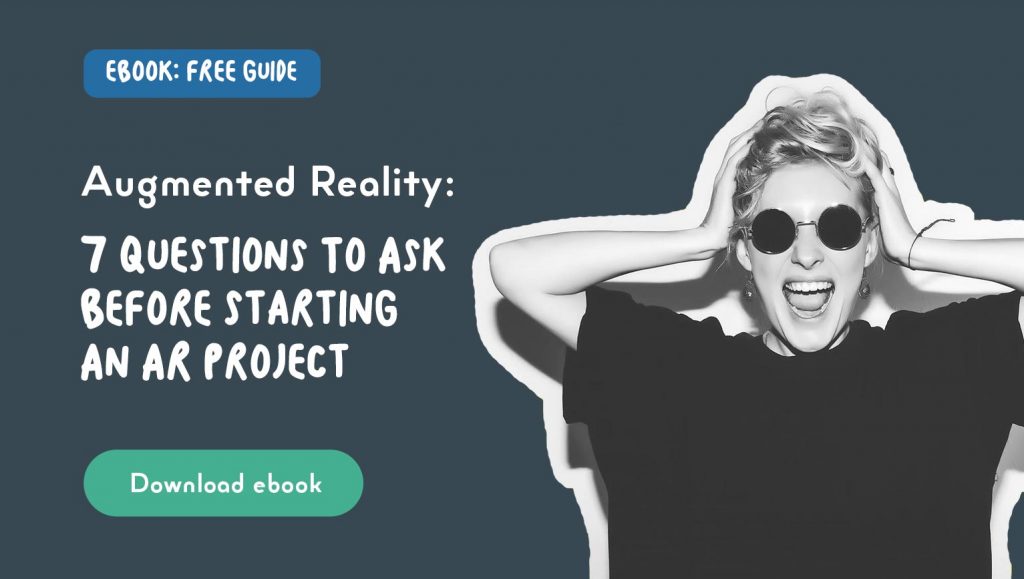Augmented Reality in Retail: How AR Boosts Foot Traffic
The last few years have seen countless stores closing their doors, with major retailers going bust. These closures resulted from a reduction of in-store foot traffic due to increased competition, the rise of online shopping, and changing customer expectations. Trends that only amplified under the weight of lockdowns.
Now, increased customer expectations have meant a heavier emphasis has been placed on getting a satisfying experience, regardless of if it’s online shopping or visiting in-store.
Retailers can adapt to this shift by adopting innovations that provide great customer experiences, but they have to be exactly that; experiences. Experiences they can’t get from browsing a website – and this is where augmented reality (AR) in retail comes in.

Adapting to customer expectations
If you want to give shoppers a reason to hit the streets and visit your brick-and-mortar store, you’re going to have to get creative and, above all, entertain them.
Technology is one of those key enablers when it comes to creating a great customer experience, and off the back of the rapid growth of AR in retail, retailers have an effective tool they can leverage to create fun, engaging experiences that bring people back into their stores.
For example, Tilly’s Inc. chose an AR solution to find new ways to connect with their consumer base by enabling 3D animation on shoppers’ store windows. This resulted in a 30% increase in foot traffic.
But why is AR in retail having this much of an effect on foot traffic? And how can this change revolutionise the customer experience?
How can Augmented Reality in Retail Influence Foot Traffic?
It Creates Buzz (Brand Awareness)
Getting more people through your doors starts with more people seeing and connecting with your brand. A great way to achieve this is by getting extra coverage in the press—for the right reasons!
There have been many high-profile AR campaigns that have gained serious traction on social media and been picked up by news outlets. Notable examples include:
The Airwalk Invisible Pop Up Store, which resulted in $5 million in earned media thanks to features in Mashable, Business Insider, TechCrunch, and several other major publications.
While it’s not exactly a retail brand, Pepsi has also used AR to create brand buzz to great effect. To promote their Pepsi Max drink, they put ads in a London bus stop. But instead of your typical poster ad, it was powered by AR and surprised and entertained commuters. The YouTube video alone has had more than 8 million views and earned coverage from Forbes and The Verge.
Remember, you’re competing with traditional forms of advertising content that’s everywhere. Augmented reality in retail helps you cut through that noise by enhancing your marketing campaigns in a unique way, driving deeper curiosity, social media chatter, and press coverage.
Creating an in-store experience draws a crowd
When it comes to buying a product that can be easily found online, what would make a customer visit a physical store?
The answer is to create added value by offering unique experiences that customers can’t find online. The store of the future needs to be more than a place to buy products. It has to be an experience.
It can be fun, practical or a mix of both, but above all it has to provide value.
Ensures Frictionless Experiences
When you use AR in retail to solve problems, you remove stress, anxiety and effort from the shopping experience.
Whether that’s AR mirrors in a dressing room or a Sephora app for customers to virtually try on make-up, the goal is the same – removing purchasing barriers.
And when you use AR to solve a problem, it becomes a useful tool for your customers, which is why it ends up being something they can rely on to ease their purchase anxiety and streamline the decision-making process.
visualise All products
One of the major challenges with retail locations is space. There is only so much merchandise you can have a store, meanwhile the options online are virtually endless.
Retailers can use AR in retail as a tool to allow customers to visualise products that may not be available at their smaller store units, which means they’re able to showcase their full inventory at all store locations in a cost-effective way. If consumers know they have access to a greater range of products (one of the main reasons people like to shop online), they will have less reservations about visiting your store in person.

View Product Specs on the Spot
Imagine your customer’s delight when they scan a product in your store and suddenly all the information they need to make an informed decision appears before their eyes.
Product specs can include product and pricing information, tips on care, colour and style options, and, most importantly, customer reviews. This is especially beneficial for goods where customers get purchase anxiety (like larger purchases).
‘Exploded views’ also allow for customers to explore areas of interest. For example, an ‘exploded view of an iPhone battery can detail the technical specs or even visualise the battery size in comparison to other models or brands.
If you think consumers won’t want to get their phones out to use AR, think again. Consumers using their phones in store isn’t something new;
58% of consumers use their smartphones while inside of stores to research the products right in front of them.
The difference is they are not going off to a third-party to do their research—where you have more risk of losing the sale completely. The purchase process continues with you.
Facilitate Store Navigation
This one is a little on-the-nose but using AR to navigate people to a specific location has already worked successfully as part of AR enhanced marketing campaigns—most notably for Burger King (BK). The trick is to make it entertaining or, in this case, controversial.
The infamous BK campaign had people holding their phones up to McDonalds ads. The rival’s ads burned and turned into a BK ad, where the consumer would then get a free Whopper and a wayfinder to the nearest BK restaurant.
The strategy had Burger King turning the vast advertising investments of its main rival into their ads of their own, driving more foot traffic into their nearby locations.
It’s a great example of how engaging AR marketing can be and gives you a glimpse of how retail can be disrupted by augmented reality.
Why is all this Important for Foot Traffic?
All of this feeds into a better, more interactive customer experience which is great for making sure customers continue to walk through the door.
However you decide to weave AR into your retail experience, you can be sure customers are waiting—it’s technology that people want to interact with, especially in the retail environment:
71% of shoppers would shop at a retailer more often if they offered augmented reality.
Unfortunately, failing to evolve your store experience doesn’t mean you’re standing still. Thanks to other brands experimenting with innovative technology and with consumers interacting more with the new technology everyday, it means you’re going backwards. If Toys ‘R’ Us—the dominant niche retail leader of a humongous multi-billion dollar category—is finished, what do you think is going to happen to retail over the next few years?
Moving Forward with AR
AR has been around in the retail industry for a lot longer than you might think, and brands of all sizes are dipping their toes into the proverbial AR pool. But when it comes to using augmented reality in retail to drive foot traffic, remember that it’s still important to put the customer first – always provide value.
As the successful applications become more common, more retailers are starting to wake up to the potential of AR. This new technology is no longer a hyped buzzword but an effective tool for driving more foot traffic AND engaging those customers once they step foot in your store (when implemented strategically).
Maybe it’s time you start using AR in retail to increase your store performance? For a more in-depth dive, you can download our eBook; “Augmented Reality In Retail: 7 Questions To Ask Before Starting An AR Project”.

